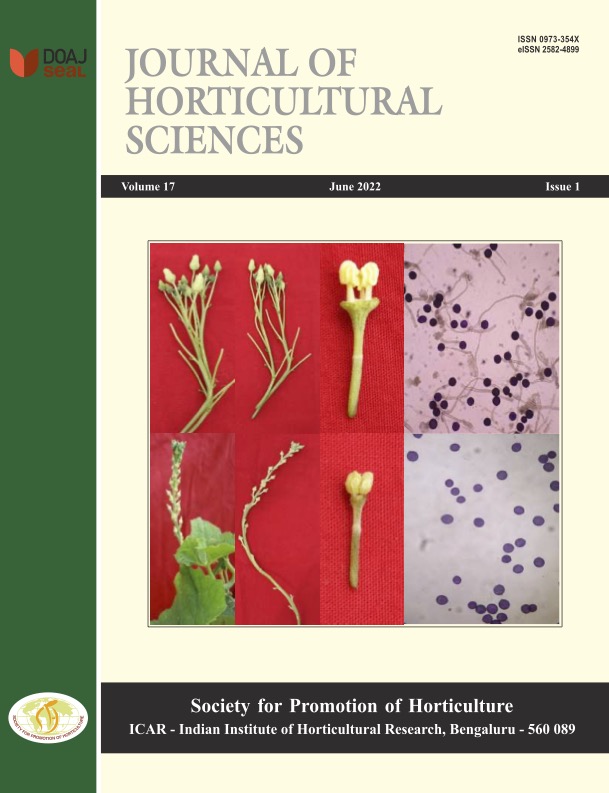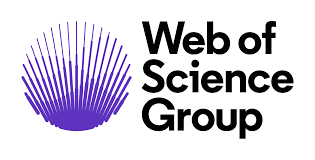Effect of various pre-harvest treatments on shelf life and morphological characteristics of fruits of mango (Mangifera indica L.) var. ‘Amrapali’
DOI:
https://doi.org/10.24154/jhs.v17i1.909Keywords:
CaCl2, GA3, pre-harvest, PGRs, storageAbstract
The mango is considered as ‘king of fruits’ in India due to its delicious taste and nutritional status. Extension of fruit shelf life is a prime importance for availability of fresh fruit in market for longer duration and distance transportation. India is the largest producer and a prominent exporter of mango in the world.In this context, the study was conducted to evaluate the effect of preharvest spray of different chemicals and plant growth regulators (PGRs) on mango var. ‘Amrapali’ for shelf life and its quality. As ‘Amrapali’ has regular bearer with very good flavor and taste with a late maturing character, selected for shelf life studies. The fruits of mango weresprayed with chemicals viz. CaCl2 1%, CaCl2 2%, Ca(NO3)2 1%, Ca(NO3)2 2%, KNO3 1%, KNO3 2%, GA3 25 mg/l, GA3 50 mg/l, Ethrel 0.1 ml/l and Ethrel 0.2 ml/l prior to harvest. After harvesting, fruits were stored under ambient storage condition. Among all the treatments, GA3 25 mg/l treatment recorded significantly highest fruit length, fruit diameter, fruit volume and fruit weight at harvest and at fully ripe stage. Application of CaCl2
2% resulted in significantly minimum physiological loss in weight consistently from 2nd day to 16th day of storage besides significantly highest shelf life and quality. Hence, this intervention can contribute in preserving physical and chemical quality attributes for maximum acceptance by consumers.
Downloads
Downloads
Published
Issue
Section
License
Copyright (c) 2022 Pradeep Kumar Vishwakarma, M. M. Masu, Sumit Singh

This work is licensed under a Creative Commons Attribution-NonCommercial-ShareAlike 4.0 International License.
Authors retain copyright. Articles published are made available as open access articles, distributed under the terms of the Creative Commons Attribution-NonCommercial-ShareAlike 4.0 International License, which permits unrestricted non-commercial use, distribution, and reproduction in any medium, provided the original author and source are credited. 
This journal permits and encourages authors to share their submitted versions (preprints), accepted versions (postprints) and/or published versions (publisher versions) freely under the CC BY-NC-SA 4.0 license while providing bibliographic details that credit, if applicable.





 .
. 











